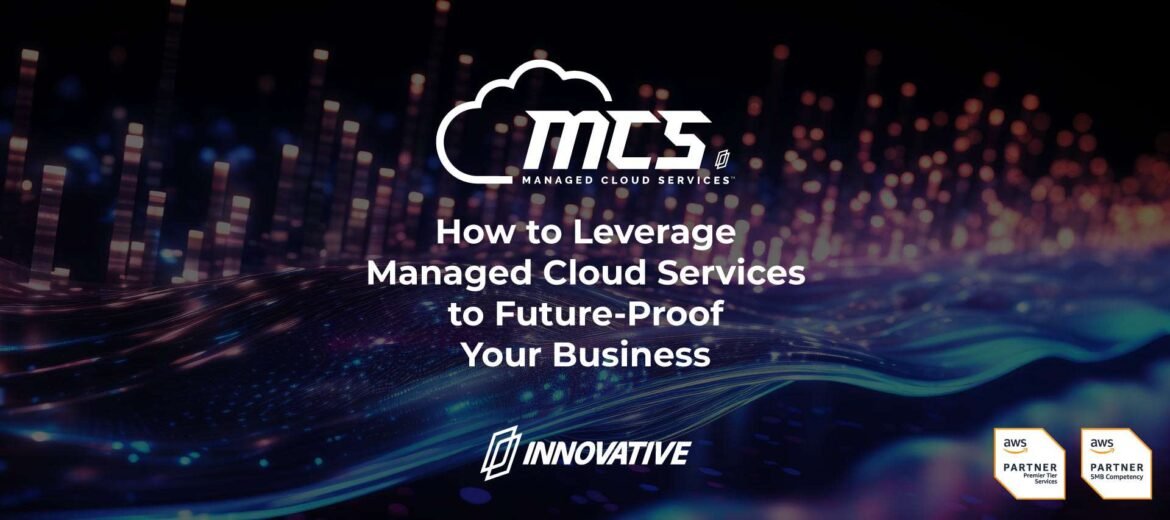
Understanding Cloud Technology
What is Cloud Technology?
Cloud technology refers to the delivery of computing services—including storage, processing, and networking—over the Internet (the cloud). Instead of relying on local servers or personal devices, businesses can now access resources and applications hosted on remote servers. This creates a flexible environment where information can be accessed anytime and from anywhere, making it an indispensable tool for modern businesses.
Benefits of Cloud Technology
The advantages of embracing cloud technology are immense. Here are a few standout benefits:
- Cost-effectiveness: Reduces the need for physical infrastructure.
- Scalability: Easily adjust resources as your business grows.
- Collaboration: Enhances teamwork with easy sharing of files and data.
- Disaster Recovery: Offers robust backup options, ensuring data safety.
Evolution of Cloud Technology
Cloud technology has come a long way from its origins in the 1960s. Initially conceptualized for sharing computing resources, it gained momentum in the late 1990s with the rise of the internet. Fast forward to today, and cloud computing now encompasses various models—public, private, hybrid—that cater to diverse business needs, continuously shaping the digital landscape.

Implementing Cloud Technology in Your Business
Assessing Your Business Needs
Before diving into the cloud, it’s essential to evaluate your specific business needs. Each organization is unique, and understanding what you require will help streamline the process. Consider factors such as:
- Data Volume: How much data do you need to store?
- Workload Patterns: Are your workloads steady or variable?
- Regulatory Compliance: What compliance standards apply to your industry?
Creating a clear roadmap based on these criteria ensures that your cloud adoption strategy aligns with your overall business objectives.
Selecting the Right Cloud Service Provider
Choosing the right cloud service provider can make or break your experience. Look for providers that offer:
- Security: Strong measures to protect your data.
- Reliability: Solid uptime and support services.
- Scalability: Ability to grow with your business needs.
Doing thorough research and possibly requesting demos can save you headaches down the road.
Migration to the Cloud: Best Practices
Once you’ve assessed your needs and selected a provider, migrating to the cloud requires careful planning. Here are best practices:
- Create a migration plan: Outline each step and establish timelines.
- Test before full deployment: Implement a pilot project to identify potential gaps.
- Train your team: Ensure everyone is comfortable with the new systems.
Following these guidelines will facilitate a smoother transition into the cloud.

Future-Proofing Your Business with Cloud Technology
Scalability and Flexibility
One of the standout features of cloud technology is its scalability and flexibility. As businesses grow or face market changes, cloud solutions allow them to easily adjust their resources. For instance, a startup may begin with minimal storage and bandwidth, but as it expands, it can effortlessly upscale without significant infrastructure investments. This adaptability ensures you’re not paying for more than you need, making your operations more efficient.
Enhanced Security Measures
Security is paramount in today’s digital age, and cloud providers are stepping up their game. Implementing advanced security measures, such as:
- Encryption: Protecting data at rest and in transit.
- Multi-factor authentication: Ensuring only authorized access.
- Regular updates: Keeping software secure against vulnerabilities.
These features help safeguard business data, giving peace of mind to organizations.
Harnessing Data Insights
The cloud provides businesses with powerful tools for data analytics, enabling them to harness insights that drive informed decision-making. By utilizing cloud analytics, companies can easily:
- Identify trends: Analyze customer behaviors and preferences.
- Optimize operations: Uncover inefficiencies and streamline processes.
- Predict outcomes: Leverage predictive analytics to stay ahead of the competition.
With these capabilities, businesses can confidently navigate towards a successful and sustainable future.

Overcoming Challenges in Adopting Cloud Technology
Data Privacy and Compliance Issues
As businesses embrace cloud technology, data privacy and compliance become critical concerns. Adhering to regulations, such as GDPR or HIPAA, is essential to avoid penalties. It’s crucial to:
- Conduct regular audits: Assess cloud data for compliance.
- Choose compliant providers: Ensure your cloud service provider understands and adheres to relevant regulations.
- Implement robust privacy policies: Protect sensitive information and reassure customers.
By prioritizing these measures, organizations can navigate the complex landscape of data privacy effectively.
Integration with Existing Systems
Integrating cloud solutions with existing systems can be challenging. It’s vital to consider aspects such as data compatibility and workflows. To facilitate seamless integration:
- Evaluate system architectures: Ensure they can work together.
- Use APIs: Simplify communication between different applications.
- Plan migration strategies: Gradually transition to cloud-based solutions.
Worked collectively, these strategies will create a smoother integration process.
Employee Training and Change Management
Finally, employee training and change management play significant roles in successful cloud adoption. Ensuring team members are well-trained in new technology reduces resistance and fosters a positive environment. Consider:
- Hands-on workshops: Provide practical experience with new tools.
- Regular feedback sessions: Address concerns and improve processes.
- Change champions: Identify team members to advocate for the transition.
With a well-planned training strategy, employees will not only adapt but also thrive in a cloud-based environment.

Emerging Trends in Cloud Technology
Edge Computing and IoT Integration
As businesses increasingly rely on the Internet of Things (IoT), edge computing is becoming key in processing data closer to its source. This trend reduces latency and enhances real-time decision-making. For instance, think about a manufacturing plant using IoT sensors; edge computing enables immediate data analysis, leading to quicker response times and improved processes.
- Benefits of Edge Computing:
- Enhanced speed: Processes data locally.
- Lower bandwidth costs: Reduces the need for large data transfers.
- Improved reliability: Continues to operate even with limited connectivity.
Artificial Intelligence in Cloud Services
Another exciting trend is the integration of Artificial Intelligence (AI) into cloud services. This fusion allows businesses to harness data insights more effectively. With AI tools, companies can:
- Automate functions: Streamline repetitive tasks.
- Predict trends: Provide data analytics that forecast customer behavior.
- Enhance security: Detect anomalies in real-time.
These capabilities empower businesses to make data-driven decisions faster and more accurately.
Serverless Computing and Microservices
Finally, serverless computing and microservices are shifting the way applications are developed and deployed. Serverless architecture allows developers to focus on code without worrying about underlying servers, while microservices break applications into smaller, manageable parts. This leads to:
- Faster deployments: Quick updates and innovations.
- Cost efficiency: Pay only for computing resources used.
- Increased agility: Easier adaptation to market changes.
Together, these trends are shaping a more dynamic and responsive cloud technology landscape, preparing businesses for future challenges.

Case Studies: Successful Implementation of Cloud Technology
Company A: Utilizing Cloud for Innovation
Consider Company A, a tech startup that leveraged cloud technology to drive innovation. By using cloud-based development platforms, they rapidly prototyped and tested new applications. This approach allowed them to:
- Reduce Time-to-Market: Launch products faster.
- Enhance Collaboration: Enable remote teams to work seamlessly together.
- Scale Resources: Adjust computing power easily based on project demands.
This innovative spirit propelled them ahead of competitors, showcasing how cloud technology can foster creativity.
Company B: Cost-efficiency through Cloud Solutions
Next, we have Company B, a mid-sized retailer that sought cost-efficiency in its operations. By migrating to a public cloud solution, they minimized IT overhead and streamlined processes, achieving:
- Lower Infrastructure Costs: Reduced need for on-premises hardware.
- Pay-as-You-Go Pricing: Only paying for the resources utilized.
- Increased Focus on Core Business: IT teams could concentrate on strategic initiatives rather than maintenance.
Their cloud transition resulted in substantial savings and increased agility.
Company C: Enhancing Customer Experience
Finally, Company C, a service-oriented firm, prioritized customer experience through cloud technology. By adopting a cloud-based CRM system, they could:
- Personalize Interactions: Tailor services based on customer data.
- Improve Response Times: Streamline customer inquiries through cloud platforms.
- Access Real-time Insights: Make informed decisions quickly.
Their ability to adapt to customer needs led to increased satisfaction and loyalty, demonstrating the transformative power of cloud technology in enhancing customer experiences.

Future Outlook: Advancements and Possibilities
Quantum Computing and Cloud Technology
Looking ahead, the fusion of quantum computing and cloud technology holds remarkable promise. Quantum computing can process vast amounts of data at unprecedented speeds, making complex problem-solving more efficient. Cloud platforms will likely host quantum services, enabling organizations to utilize powerful computing without needing specialized hardware. This advancement could lead to breakthroughs in areas like:
- Drug Discovery: Simulating molecular interactions faster.
- Financial Modeling: Enhancing risk assessments and investment strategies.
- Optimization Problems: Solving logistical challenges more effectively.
5G and Cloud-Based Services
The rollout of 5G technology will revolutionize cloud-based services further. With faster speeds and lower latency, businesses will benefit from:
- Enhanced Connectivity: Smoother communication between devices.
- IoT Growth: More devices can connect in real-time.
- Improved Mobile Applications: Delivering richer experiences to users.
This 5G infrastructure could dramatically reshape how cloud services operate, offering new possibilities for innovation.
Ethical Considerations in Cloud Technology Adoption
As we explore these advancements, ethical considerations become increasingly crucial. Organizations must address issues such as:
- Data Privacy: Ensuring customer data is handled transparently.
- Algorithmic Bias: Maintaining fairness in AI-driven decisions.
- Environmental Impact: Understanding the energy consumption of cloud services.
Balancing innovation with ethical responsibility will be essential to building trust and ensuring sustainable progress in cloud technology.

